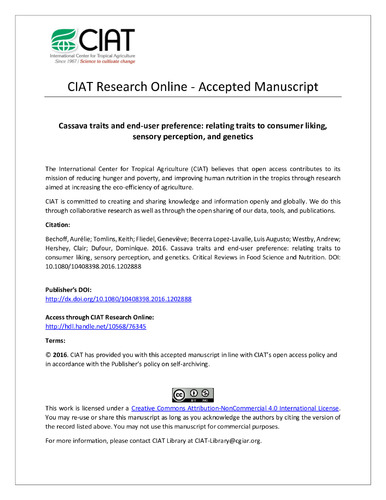Cassava traits and end-user preference: relating traits to consumer liking, sensory perception, and genetics
Abstract
Breeding efforts have focused on improving agronomic traits of the cassava plant however little research has been done to enhance the crop palatability. This review investigates the links between cassava traits and end-user preference in relation with sensory characteristics. The main trait is starch and its composition related to the textural properties of the food. Pectin degradation during cooking resulted in increased mealiness. Nutritional components such as carotenoids made the cassava yellow but also altered sweetness and softness; however yellow cassava was more appreciated by consumers than traditional (white) varieties. Components formed during processing such as organic acids gave fermented cassava products an acidic taste that was appreciated but the fermented smell was not always liked. Anti-nutritional compounds such as cyanogenic glucosides were mostly related to bitter taste. Post-harvest Physiological Deterioration (PPD) affected the overall sensory characteristics and acceptability. Genes responsible for some of these traits were also investigated. Diversity in cassava food products can provide a challenge to identifying acceptance criteria. Socio-economic factors such as gender may also be critical. This review leads to questions in relation to the adaptation of cassava breeding to meet consumer needs and preference in order to maximise income, health and food security.

